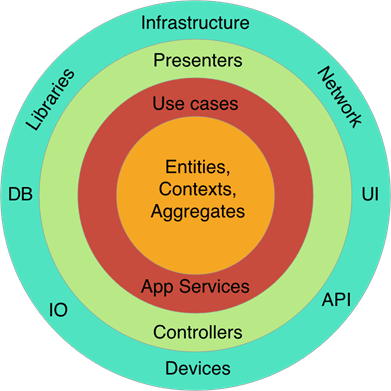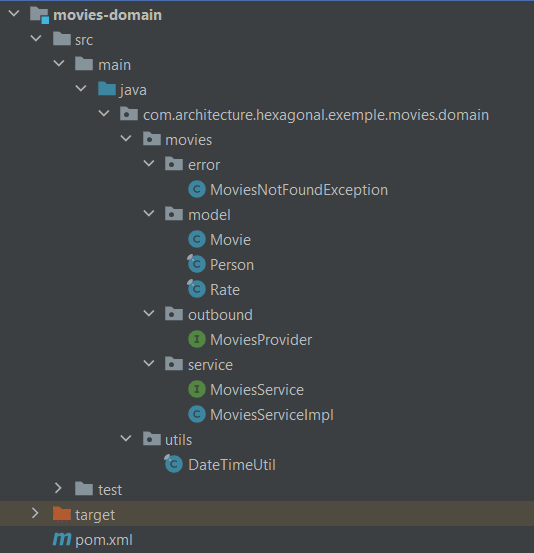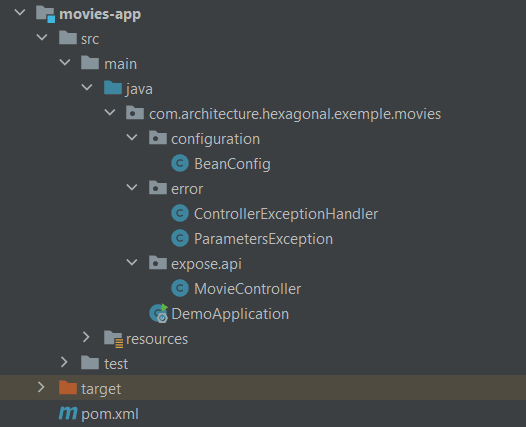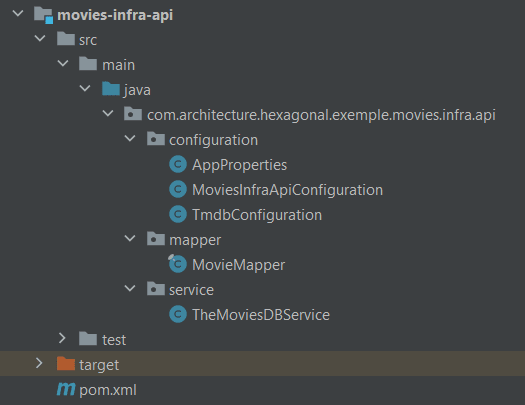Small Introduction
In this article we will introduce a software architecture that implements the DDD (Domain Driven Design) introduced by Eric Evan in the “Blue Book” : Domain-Driven Design: Tackling Complexity in the Heart of Software
When we correlate DDD and Architecture, many of us think of Microservices. But this is not the only one implementation for DDD concept.
Hexagonal Architecture is also a good candidate for implementing DDD correctly and it is a very good architecture in general described by Robert C. Martin in his book: Clean Architecture
Moreover, in a microservice, we need to keep good practices and good architecture. Even though Hexagonal Architecture was first designed for monolithic application, wa can apply to build our microservice as well.
Prerequisites
- JDK 11 or earlier
- Maven 3+
- Any IDE or text editor
What is DDD ?
Like already explained above, The Domain Drive Design was introduced by Eric Evans in 2003. It is a Software engineering approach that keeps the Domain at the center of our core software set. The whole solution must revolve around the business rules and its terminologies.
We need to create a Ubiquitous Language between all stockholders (Domain team, Technical teams). Each terminology in this Language should be found in the application. For Example, if we are building an application to track airplane's schedule, we attempt to found in the application Entity like "Airplane" or "Travel" and Value Object like "Destination" or "Arrival".
For more information about DDD I advise you to read this free e-book https://www.infoq.com/minibooks/domain-driven-design-quickly
Give me an Hexagon
When you translate DDD principels into Architecture Diagram, the most suitable approche is Microservices Architecture. Therefore, each bounded context need to be builded into bounded context. For example, when you build an e-commerce website or application, you will probably have one microservice for account management, another for payment features and another for stock management. Each of them as only one purpose who are translated into Domain bounded context. It’s what make microservice a good candidate for DDD implementation.
But it is not the only one. As Mark Richards says about architecture decisions on his book Fundamentals of Software Architecture: “It’s always a trade-off”. Indeed, microservice are not the only possible implementation. For this type of architecture, you need to have the ecosystem for managing (for example container management tools like Kubernetes or OpenShift for example) and the need of great scalability. Each Architecture decision come with these cons. For Microservices, reliability and performance can be a challenge.
And even if you choose this way, each microservices needs to have their own internal architecture.
So, what is exactly Hexagonal Architecture ?
It’s a software architecture introduced by Alistair Cockburn in 2005. It is also called “ Port and Adapter Architecture “. The goal is to have a clear separation between your Domain code (in single project or module) and your supporting code (like database access, APIs call or Framework like Spring in Java).
Like that, you can change any part of the technical details without impacting the Domain.
The purpose of DDD is keep the focus on the Domain implementation and not worry about technical detail too soon.
As illustrated in the schema below, we first have an application module (cf: app) who will use the Domain by his interfaces. Domain implement this exposed interfaces with these services and if this need to use external concerns, like database access, it will use others interfaces, named port (outbound).
The module that wants to be used by the Domain, will have to implement this interface (adapter) and map data between him and the Domain.
Implementation
We will create a new Spring boot application with a very simple case to illustrate this architecture.
You’ll find the source in the Github repository
It’s an application retrieving movies information from an external public API.
we’ll create a Maven project with movies as the root and 3 submodules like below.
movies
├───movies-app
├───movies-domain
└───movies-infra-api
As you can see, we have one main module named movies-app, one Domain module named movies-domain and one infra module named movies-infra-api. Each infra represent a detail about infrastructure like database access and external APIcall.
Since the Domain only contains classes with business rules, it cannot run alone. It requires some configuration and a main method or other technical details to run.
The first rule of Hexagonal Architecture is clear :
- Domain depends on nothing. Everything depends on him.
The second is :
- You do not use an infra module directly, you have to pass only through Domain module.
That’s way, there is no direct dependency between two infra modules. No one has knowledge of the existence of the others.
Therefore, how will the Domain be able to use infra-api if doesn’t depend on them?
Dependencies rules
The pom.xml configuration will prevent us over accidentally coupling modules.
To respect dependency rules for Hexagonal Architecture you need to have the dependencies part from pom.xml of movies-domain like below :
...
<dependencies>
<dependency>
<groupId>org.projectlombok</groupId>
<artifactId>lombok</artifactId>
<optional>true</optional>
</dependency>
<dependency>
<groupId>org.junit.jupiter</groupId>
<artifactId>junit-jupiter-api</artifactId>
<version>5.8.2</version>
<scope>test</scope>
</dependency>
<dependency>
<groupId>org.junit.jupiter</groupId>
<artifactId>junit-jupiter-engine</artifactId>
<version>5.8.2</version>
<scope>test</scope>
</dependency>
</dependencies>
...
As you can see, nothing about Spring, about persistence or external API either. It’s an immutable rule, the Domain depends on
nothing. Just what is needed for compile (here Lombok for example) or run tests.
How can we use other module ?
Domain will expose Interfaces and each infra module will implement them. As such, the Domain juste care about use his
interfaces and doesn’t care about who and how they will be implemented.
For dependency of all infra, we’ll have to import the Domain module with scope provided like below :
...
<dependencies>
...
<dependency>
<groupId>com.architecture.hexagonal.example</groupId>
<artifactId>movies-domain</artifactId>
<scope>provided</scope>
</dependency>
...
</dependencies>
...
And for the application module movies-app, we’ll need to importe Domain and all other modules like below:
...
<dependencies>
<dependency>
<groupId>com.architecture.hexagonal.example</groupId>
<artifactId>movies-domain</artifactId>
<scope>provided</scope>
</dependency>
<dependency>
<groupId>com.architecture.hexagonal.example</groupId>
<artifactId>movies-infra-api</artifactId>
<scope>runtime</scope>
</dependency>
...
</dependencies>
...
For all infra module we need to use runtime scope. That prevets developers to accidentally using modules directly in other infra modules.
Sometimes the infra module needs another one. To do this, it must go through the Domain instead of using it directly. You should not find infra dependencies in other infra modules. It is the ‘app’ that will orchestrate all the infra dependencies to make the link.
Domain
So, we will start with the main important part of this project, the Domain. Before start to coding, we need to stop us one minute for thinks about the Ubiquitous Language of our Domain. In the real world, this part can take long times at the start of the project and can evolve throughout the life circle of the project.
What does your application need to do ? Why creat it ?
The answer is : Movies
We want to retrieve Movies information like title, description, rate, director, actors …
So let’s start by creating our Ubiquitous Language that we must find in our application afterwards.
Ubiquitous Language
As our business Domain is very easy, it will be easy to create our UL quickly, but, in real situation, it may take time. A few days or months before finding it and that every stakeholder approves and uses it.
In our case, it will be something like this :
- Movies : Represent a list of Movie
- Title : The movie title
- Synopsys : The movie explanation with little synopsys
- Rate : The rate of the movie
- Director : Person who as create the movie
- Actors : Persons who as playing in the movie
- Release Date : Date of movie was released
the Rate need to be between 0 and 5
Api Movies
For this purpose, we will use the open API TheMovieDB, with the library provided by Holger Brandl in this repository.
I already created a fake account for this article. The token is put in the application-local.yml of the project. If the token is off, you can create an account and fetch a new token : https://www.themoviedb.org/signup
Once everything is good for this API subscription, you can directly run the Spring Boot application and test it.
Expose our own APIs
Our API exposes 3 APIs which are mapped with Movie DB APIs. We map the data with our own data model.
- GET http://localhost:8080/api/v1/movies/populars
- GET http://localhost:8080/api/v1/movies/upcoming
- GET http://localhost:8080/api/v1/movies/[id]
The first one give you a liste of movies sorted by popularity, the second one give you the liste of movies who are upcoming, dnd the last one, give you the detail about the movie with the id pass in path parameter.
Architecture
For the architecture we obviously use the Hexagonal Architecture with Apache Maven for create module and build our application.
The configuration of the POM, as already explained above, respects the rules of hexagonal dependencies.
In the movie-app module we have the main class for run the Spring Boot application and the management of our little API exposed.
The schema represent the architecture for better readability of the project structure.
We will explain each module bellow in more detail.
Domain module
In the Domain module, we crate a package named movies who allow us to create different Domain or subdomain part in the same bounded context. Be worries about this contexte, you need to respect it for be sur to do not mixe different domains who not allow to evolute together.
In fact, in the same domain package you do not to find, for example, a domain for make coffee and another domain for watch television.
In this case you need to create two different domain artifact (.jar for Java).
In this Domain module, we will found sub-packages to manage the module, for example, error package for exception handling, model package to represent business model. In this template package, you need to find the ubiquitous language.
You have a service package too, who represent all the business logic. Everything your application needs to expose as functionalities need to reside in this package.
And for finish, whe have a outbound paquage. This paquage contains all the interfaces used by the service paquage. That represent all functionalities not covered by the Domain, like database access, api call ... It is these interfaces that will be implemented by an external infra-module.
App module
In the app module, we will found all you need for run your application. This is this module who orchestrate all other module.
In is POM configuration we need to found Domain module who is provided directly and all infra module declared for be used at runtime only.
Like Domain module, we found a package for error management (declaring and handling error).
The configuration package gather all Spring Boot configuration, in our case, we have just a Bean Configuration for declare Domain module service (remember, the Domain know nothing about Spring context).
We found to the package for the Controller for our exposed APIs too.
And obviously, we have the main class DemoApplication for run our Spring Boot application.
Infra module
Finally, we have the infra module who assemble all configuration and services for external API call.
Under the configuration package we have all configuration about Spring and the library used for call TheMovieDB APIs.
An usual error management package and Service package who represent the features needed by the Domain for work properly.
The class TheMovieDBService implement the Domain interface MoviesProvider found in the outbound Domain package.
Conclusion
I hope this article will help readers to understand the foundation of the clean architecture with implementation of the DDD : Hexagonal Architecture. Like is already explained in this article, the architecture choose is always a trade-off and Developers or Architectes don’t need to follow this implementation all the time.
But, indeed, this architecture is a nice demonstration of a non coupling modules for better maintainability. We can change any part of the application without scare about regression in other part.
The Domain Driven Design is better than just a new fashion pattern to follow, it’s a point of view of the whole software development paradigm.
The development Team need to be focused about Domain concern instead of be entertained by all new Software new tools who evolve every day.
When a Software team understand this, he can stand in front of any business rules challenge.
Github repository : https://github.com/KevinDupeyrat/Hexagonal_Architecture_Article/tree/master/movies













Top comments (0)